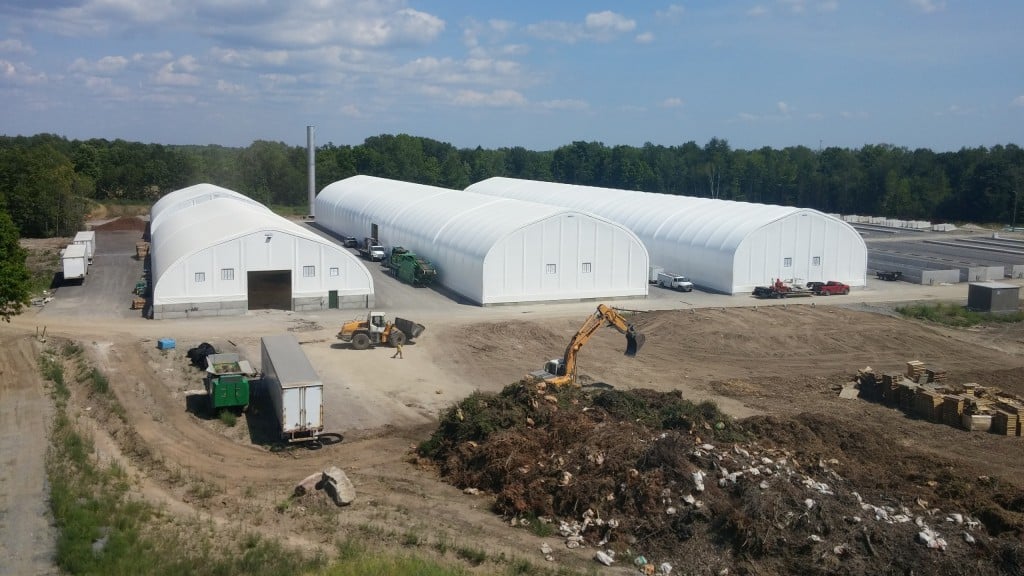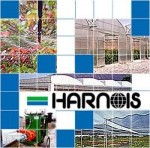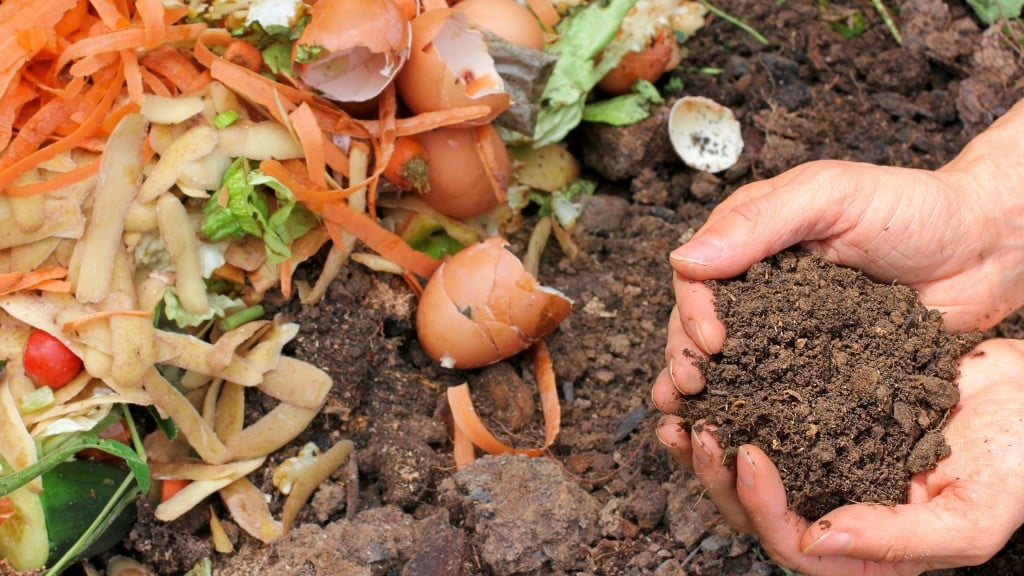Virtually odour-free composting underway at Astoria Organic Matters
Fabric-covered buildings and in-vessel system combined with high-tech aeration control have resulted in virtually odourless operation for Ontario’s latest composting facility

Astoria Organic Matters Canada LP was created in 2013 and began full-scale composting operations this past September, in Belleville, Ontario. The facility uses a GORE Cover in-vessel system, housed beneath MegaDome polyethylene-fabric-covered, metal-frame buildings. With capability to process approximately 70,000 tonnes per year of organic materials, Astoria is now one of the largest facilities of its kind in Canada.
Organic materials, ranging from leaf and yard waste to bio-solids and food waste are sourced from around the Eastern Ontario region, hauled to Astoria by municipalities and private haulers, and turned into high-grade, certified-organic compost. Since operations began in September, the site has processed about 20,000 tonnes of organic material, and according to Astoria’s CEO and president, Al Hamilton, their greatest success so far is that there are no detectable odours on site.
“We are one of the largest organics processing facilities in Canada, using GORE Cover technology,” says Hamilton. “It’s our secret really. It’s their covers over our windrows that qualify our system as ‘in-vessel’. It has allowed us to introduce food waste and biosolids, and other items that tend to be more odorous than just leaf and yard waste.”
He says Astoria’s newly installed clear-span, fabric-covered buildings and a state-of-the-art aeration control system are the other keys to their success with respect to odour control.
“Besides our tipping building, MegaDome installed a building to cover our bio-filter, and two composting buildings, where the initial phase of windrow composting takes place using the in-vessel system,” explains Hamilton.
Astoria’s aeration control system was provided by MegaDome’s parent-company, Quebec-based Industries Harnois. According to Harnois, the Astoria compost/aeration control system is the first one that they have designed, engineered and installed.
“By using in-vessel composting, combined with the new MegaDome buildings and our control system, as a private company without municipal funding, we have been able to build a plant that is economical and capable of accepting a wide variety of waste types,” says Hamilton.
In-vessel composting, covered
At Astoria, the closest ‘receptor’ (resident or business entity that would be affected by strong odour emissions) is just 72 metres away, with others as close as 100 metres away.
“The big success for us so far has been our odour control. There are no detectable odours on our site,’’ says Hamilton.
“What Ontario has done in their recently introduced guidelines is put a number on odour emissions – called ‘odour-units’,” he explains. “Compost operations can’t produce any more than one odour unit to the nearest receptor off your site. It’s complicated, but it basically means you better be almost completely odourless. To put it in perspective: the human nose cannot detect a difference between one odour unit and five odour units.’’
“It’s the first time that I’ve built a facility, using the GORE Cover in-vessel system, that needed a fabric-covered building over the initial composting phase to control odours to the levels required. I have also never seen a fabric-style building over a bio-filter. With the new regulations in Ontario, this combination is the right solution for Astoria Organic Matters.”
The last two buildings installed at Astoria are the largest of the four MegaDome structures on site. This is where the in-vessel composting takes place. These buildings were installed after the tipping and bio-filter buildings, as their construction depended on odour modelling results.
“It took us approximately one year back and forth with the Ministry of Environment during the application process to understand what was really required to reduce our ‘odour units’ to the specification of one odour unit,” says Hamilton. “Once we did have our approval, the composting buildings that cover our in-vessel windrows went up quickly – in about five months for the complete build.”
Controlling the air
The Harnois control system not only controls odour, but it pulls fog and condensation out of the buildings, and optimizes energy consumption.
“Each second, the system evaluates all parameters and reacts accordingly to meet or exceed MOE requirements,” explains Patrice Harnois, president and CEO of Industries Harnois. “It maintains and monitors the mechanical components and minimizes oxidation factors that may affect the structural components.”
From the tipping building, air runs into a moistening unit that helps dampen odour and is then sent into a bio-filter, housed in the second MegaDome building on site, and up a stack which is located behind the four buildings.
The control system also includes safety features, monitors maintenance routines and uses wireless monitoring that is connected to the cellular phones of Hamilton and his management team.
“We can see airflow, air temperatures, velocities and moisture in our air, at every stage of the process,” explains Hamilton. “There is also vibration analysis on the equipment and fans that pull the air, so we know if we have a bad part on a fan or a bad bearing. We also have a full weather station, monitoring wind, barometric pressure and other data.
The alternative to a system like Astoria’s, with the in-vessel composting, the fabric-covered buildings and the sophisticated aeration control, is that there would need to be a large concrete structure and the site would need to be situated several kilometres away from the nearest receptor. According to Hamilton, it is pretty tough to site a facility kilometres away from anything or anybody, and still be able to collect waste economically and attract large haulers.
“Our solution was to focus on engineering. We pick our partners carefully, like Harnois, and we got through the issues at hand by ‘engineering, engineering, and engineering’. We are very proud of this project. It took us about two years to get here and we’re the first ones in Ontario to successfully apply for a new facility under the new composting guidelines.
“Our Harnois control system is incredible,” says Hamilton. “The Ministry of Environment has visited us several times since September, and have been very impressed with the air we capture and treat with respect to odour. We have had absolutely no odour complaints from residents, from points off-site.”
Large equipment and the room to move
Astoria’s new MegaDome buildings are built using a metal frame that is hot dipped galvanized, and fully engineered and designed to be unaffected by corrosion and humidity.
“Our compost rows are cooking at about 80 to 84 degrees Celsius,” explains Hamilton. “It is very hot under the windrow covers and it can get pretty damp in the buildings.”
Additionally, the metal frame, polyethylene-fabric covered design of the MegaDome buildings provides open interior space, and allows for natural light, which makes for a comfortable and high-mobility indoor work environment.
“We use a winding machine for our GORE covers that is 18 feet high, and about 30 feet wide,” continues Hamilton. “It straddles each windrow to pick up the cover, winds it up, and then unwinds it when you want to cover the windrow.
“This big, crawling machine had clearance issues, so we worked with MegaDome on making sure it would run inside the buildings without hitting their frames or structures.”
Astoria does not use windrow turners, so their buildings also needed adequate space for the large wheel loaders which are used to turn and fluff their windrows.
“Our wheel loaders are all Liebherr machines,” says Hamilton. “We’ve had good success with Liebherr. The fuel-economy alone is worth it’s weight in gold. Our screeners and stackers for the finishing process are made by McCloskey, out of Peterborough, Ontario. We also have a low-speed shredder/mixer manufactured by Komptech, and a high speed Rotochopper grinder, model B-66. The Rotochopper is on site a lot, but we’ll also take it to landfills and grind for municipalities and cities, or anyone that collects leaf, yard and brush waste at their landfills – we’ll go in and grind for them.”
Certified-organic compost
At the end of the day, for Al Hamilton and the Astoria Organic Matters facility, it is about quality of their end product. He says many in the industry still focus on profits at the front end of the process. For Astoria, the finished product is mainly high-grade, certified-organic compost/fertilizer, and they also plan to grow into the retail bagged-compost market, which will eventually lead to landscape supply. Still, their main end-market is in agriculture.
“We use A&L Labs out of London, Ontario, for all of our testing and we’re in a certified quality vendor program there,” says Hamilton. “We can sell to organic farms, and for all our agricultural customers, the nutrient value of our compost is very important. With our compost, they get information about the product’s pH and heavy metal content, as well as moisture and organic matter content. Farmers calculate their usage on those values. When we give them a full report, it requires them to do very little additional testing or calculations on what their usage should be.”
According to Hamilton, some of the farmers they sell to claim they’re eliminating 50 percent of their commercial fertilizer use because of the use of compost as organic fertilizer. Others are telling them they no longer have to deal with drought because their soil holds more water due to its compost content. And one of his agriculture customers told him: “I had such heavy clay and two years ago I couldn’t buy a tractor big enough to pull a plow through it. Now I can pull it through by hand and it’s because of the organic matter we’ve added.”
“So we certify our compost and by doing so, we’re certifying the quality, and we’re providing farmers with a lot of valuable information,” says Hamilton.
“I had a farmer come in here last week, grab my test results, and he was very impressed. I took him around back, he grabbed a handful and he ordered 1,300 metric tons.
“It’s very calculated on the agricultural end. Any time you can provide certified-organic compost, along with detailed information about the product, it just helps market it. And it helps raise the standard for the industry.”
This article originally appeared in Recycling Product News, November/December 2016, Volume 24, Number 8.



